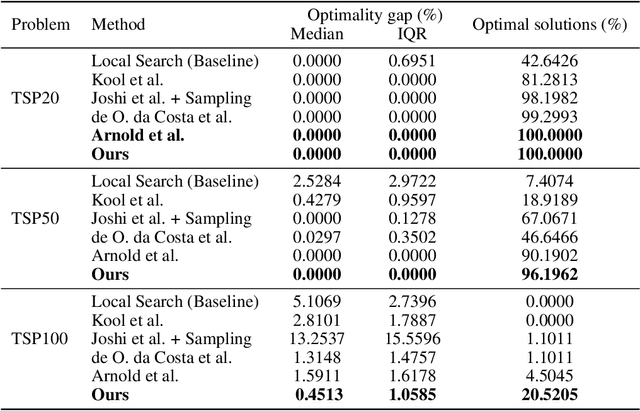Benjamin Hudson
Graph Neural Network Guided Local Search for the Traveling Salesperson Problem
Oct 12, 2021



Abstract:Solutions to the Traveling Salesperson Problem (TSP) have practical applications to processes in transportation, logistics, and automation, yet must be computed with minimal delay to satisfy the real-time nature of the underlying tasks. However, solving large TSP instances quickly without sacrificing solution quality remains challenging for current approximate algorithms. To close this gap, we present a hybrid data-driven approach for solving the TSP based on Graph Neural Networks (GNNs) and Guided Local Search (GLS). Our model predicts the regret of including each edge of the problem graph in the solution; GLS uses these predictions in conjunction with the original problem graph to find solutions. Our experiments demonstrate that this approach converges to optimal solutions at a faster rate than state-of-the-art learning-based approaches and non-learning GLS algorithms for the TSP, notably finding optimal solutions to 96% of the 50-node problem set, 7% more than the next best benchmark, and to 20% of the 100-node problem set, 4.5x more than the next best benchmark. When generalizing from 20-node problems to the 100-node problem set, our approach finds solutions with an average optimality gap of 2.5%, a 10x improvement over the next best learning-based benchmark.
 Add to Chrome
Add to Chrome Add to Firefox
Add to Firefox Add to Edge
Add to Edge